“The United States Air Force RB-29 of the Ninety-First Strategic Reconnaissance Squadron, which crashed yesterday morning, went down after it was fired upon by two Russian-built MiG-type fighters. Both MiGs made two firing passes at the reconnaissance bomber, setting it afire. All eleven crew members bailed out. The plane crashed on the Island of Hokkaido, ten miles east of the town of Kenebetsu. Ten of the eleven crew members landed safely on the ground. The eleventh was found dead.”
Thus read the USAF announcement referring to the shootdown on November 7, 1954, of a veteran RB-29A that was once known as “Tiger Lil” and had flown many missions over Korea during the war. The newspapers of the day were far more sanguine and ran the headline, “Reds Down U.S. Bomber; 1 Dead”.
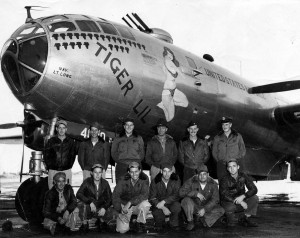
The Aircraft and Crew
The RB-29A, tail number 42-94000, was a World War II era Boeing B-29A Superfortress that had been converted for photo reconnaissance missions and assigned to the 91st Strategic Reconnaissance Squadron. The plane was stripped of its identifying markings and its famous “Tiger Lil” nose art removed. It was then modified to carry a set of high resolution cameras for photo mapping and recon purposes. In August 1954, the aircraft was assigned to the 6007th Composite Group, which was assigned to do a variety of reconnaissance and intelligence missions, including for the National Security Agency.
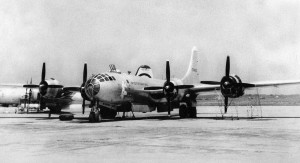
The flight crew assigned to fly the aircraft on November 7, 1954, on a routine photo mapping mission. The plane was to make three passes over northern Hokkaido to take complete imagery of the northernmost islands of the Japanese nation. Nearby were the disputed territories of the Kurile Islands and just offshore of Hokkaido, were the contested “Lesser Kuriles”. The Soviets maintained an active air base at nearby Tofutsu, manned by the 10th Air Army Regiment T5350D.
The Mission
The RB-29 aircraft took off from Yokota AB, Tokyo, Japan, and flew north to Hokkaido to begin its mission. Meanwhile, a pair of MiG-15s were already circling in the Kurile Islands area on a routine patrol. Soviet air defense radars soon picked up the approaching RB-29, which was categorized as a “suspicious” aircraft. Within the hour, the RB-29 was re-categorized as “hostile” — at that point, the attack was but six minutes away. As the RB-29 flew about 9 miles off the Hokkaido coast, at least 15 miles offshore from Russian territories, a pair of MiG-15s were vectored into the vicinity of the target. The pilots were told to acquire their target visually. At the controls were the two Soviet pilots named Kostin and Seberyakov. Once they had spotted the plane, the ground controller issued the order to attack.
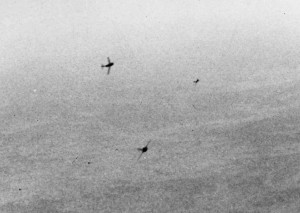
Perhaps to ensure that his voice was clearly heard over the noise of the HF radios (MiG-15s were not fitted with VHF radios), he repeated the command three times. The two MiG-15s closed rapidly on the RB-29 from below at about 10,000 feet. The RB-29 was flying at 16,000 feet of altitude. One of the American gunners, A2C Walter Lentz, spotted the two Soviet fighters first and called them out. The RB-29 turned quickly toward nearby Hokkaido as its Aircraft Commander, Capt. Anthony F. Feith, told his copilot, Lt. David N. Oliver, that he didn’t think that the MiGs would fire. After all, they were in Japanese airspace and on a regular photo mapping mission.
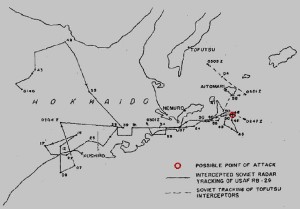
The MiGs rapidly closed, climbing upward toward the RB-29. As they closed, they opened fire. Breaking off, they passed under the plane and did a split-S back down to evade any return fire. Once clear, they pulled back around for second firing pass. A2C Lentz spun his gun sight onto the closing fighters and keyed the intercom button and screamed, “They’re firing!” He requested permission to return fire. Somehow, Capt. Feith did not issue the order, perhaps being confused or disoriented. The RB-29 was now well within Japanese airspace and less than 7 miles from the coast.
A second time, the MiG-15s closed rapidly and fired. This time their fire was devastating as cannon rounds raked the aircraft’s wing and hit a wing tank. Flames quickly engulfed the wing and engine. Realizing it would be impossible to make it to Hokkaido, Capt. Feith issued the order to bail out. All of the men were able to clear the aircraft and descended into the water. However, one got tangled in his parachute lines after hitting the water and drowned before being picked up by fishing boats and other vessels in the area, and then brought to shore.
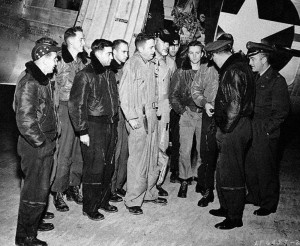
Aftermath
The ten crewmen were picked up by USAF trucks and taken to Kenebetsu and then flown back to Yokota Air Base, Tokyo, on a C-47 Dakota transport plane. The crewmen were examined on arrival and determined to be in good health. Meanwhile, documentation work on the crash site began. It was determined that the plane, once the crew had bailed out, had descended into the area at Nemuro, Japan, and crashed into an unoccupied house, destroying it. In a crazy coincidence, Nemuro had been the site of a previous RB-29 shootdown 25 months earlier.
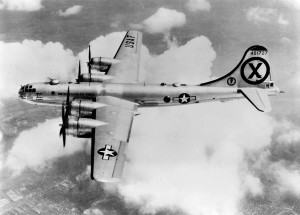
In the wake of the attack, both the US and Japan filed a formal protest. The Japanese reaffirmed their territorial claims to the islands adjacent to Hokkaido. At the time, the Soviet Union claimed the islands in an effort to stretch the meaning of the treaty agreements that were signed in San Francisco at the end of the war. In response to the formal protests, the Soviets claimed that the US and the USSR should live “in peace”. Naturally, they rejected requests to pay reparations.

At the National Security Agency, the intercepts and ELINT that had been collected painted a clear picture of events. The radar plots from the Soviet systems were evaluated and it was realized that the Soviets had patrolled the airspace nearby for over two hours before the attack. It did not take long for them to declare the US aircraft hostile once it flew over Hokkaido. The ground controllers then issued an order to shoot the RB-29 down – repeating it three times for clarity. After the second pass, the bomber flew on for 11 minutes before crashing. Even after the two Soviet MiG-15s that had fired on the plane returned to base, the Soviets kept fighter cover up in the area for an additional four and a half hours.
Final Words
With the shootdown of the RB-29 on November 7, 1954, the number of US reconnaissance aircraft downed by the Soviet Union had reached eight. A total of 50 Americans had lost their lives. In the years that followed, yet more aircraft would be lost. Was it worth it? That will always be hard to say, yet the missions flown were essential in documenting and understanding the true nature of the Soviet threat during the Cold War. They allowed the US to make accurate assessments of the true weaknesses of the Soviet Union and to be able to manage the challenges the West faced during a very dark and uncertain time in world history. The men who sacrificed so much and took the risks necessary to achieve that goal are heroes in the true sense of the word.
One More Bit of Aviation History
The ten surviving crew members of the downed RB-29A were:
— Captain Anthony Fieth, Pilot, of Chester, PA
— 1st Lt. David N. Oliver, of Corvallis, OR
— 2nd Lt. Harry L. Rollins, Chickasha, OK
— 2nd Lt. Henry J. Sechler, of Clara City, MN
— Sgt. Harold R. Taylor, of Newport, DE
— A/3C Earl E. Weimer, of Elkins, WV
— A/3C Wallace B. Whalen, of Union, NJ
— A/2/C Walter K. Lentz, of Astoria, NY
— A/1C John W. C. Dalton II, of Tulsa, OK
— A/1C Robert E. Berry, of Carrizozo, NM
Sadly, one crewman died:
— 2LT Sigfredo Angulo, Navigator, of Los Angeles, CA
Today’s Aviation Trivia Question
What aircraft replaced the RB-29 for photo reconnaissance duties with the 91st SRS?

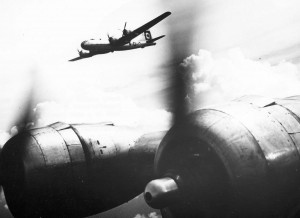
RB-47H replaced the RB29. In, May 1958, I was a member of an armed RB-66C crew flying a coordinated mission with an RB-47H and several other aircraft. (A3D, P2V from The U.S. NAVY and a U-2) We flew out of Turkey, over the Black Sea. Our aircraft was intercepted by Russian MIG-17’s at 34,000′ . We were able to outrun the MIG’s by diving to the limiting mach of the B-66. (M 0.95) toward the Turkey shore.
The 91st became the 6091st in Dec 1954 and flew RB-50s.
I have friends who flew as part of the “Bat” crew on the RB-29s and RB-50s. I flew as a Bat on C-130s flown by the 6091st. In the late 60s the 6901st was redesignated as the 556th Recon Sq.
My Grandfather was with the Tiger Lily crew at one point. The history of ‘her’ absolutely fascinates me.
The tall man with the bandage on his chin is my father, Capt. David N. Oliver. He retired as a Lt. Col. He passed away two years ago. Fun to see him on this website. Thank you for sharing his story. He is the only person I have ever known to have been shot down by a Russian MiG.
I worked in the same office with LTC David Oliver at the Oregon Military Dept. in Salem, Oregon.
He was a very friendly person and I enjoyed being with him.
Wish I had kept in touch with Dave after he retired. And I was sad to hear of his passing.
Hello, I see that you are Bob Roth. I am trying to locate Lt Robert C. S. Roth 0688282, to ask about his time flying the B-29.
I live here in Wichita, Kansas, where some of the B-29s were made at our Boeing plant.
Thank you very much.
Hal Ottaway
Jennifer, my uncle was the man who was killed. I have lots more information on this flight, if you wish to see it
Greetings Jennifer, we are going to do a hat honor of this crew and the downed recon plane. I believe it was named “So Tired”. We would love more info on your father and his time with the 91st SRS Strategic Recon.
Best regards,
Alex Higgens
Alexanderpaulhiggins@gmail.com
Hey Dave, Hope you are doing well, , Please see message below, I believe I have a pic of you uncle. I would also like more info if you could.
2nd Lt. Harry Rollins is my father, passed away in 2004. He retired after 20 years from Westover ARB …. He loved the Air Force ….. Miss him dearly
Walter Lentz, is my stepfather and is alive and well living in Vero Beach, Fl. If you would like to contact him, you can email me at sarrojo@outlook.com
My name is Tim Mackie and I am a USAF Historian. My focus is mainly flight gear and clothing during the Korean and Cold War 1946-64. A considerable amount of my research has been around the various crew ball-caps worn from the RS and BS squadrons stationed in Japan in the mid-50s. The famous photo above has always perplexed me as I was curious what the colors of the cap were…I am hoping someone might help me shed some light on this.
Any additional information or photos of other “Yakota caps” would be greatly appreciated. Many thanks to you all and Happy New Year 2015.
Warm Regards,
Tim Mackie
USAF Historian
Keller, Texas
817-600-5696
My dad is Msgt Donald H Bykonen. On November 7, 1954, he was flying a B-29 out of Japan when this incident occurred. My dad was a flight engineer for 20 years, including in Korea and he spent 9 years in Vietnam. You guys should interview him. He has lots of information. He is 83 now and still in good shape. He logged 6500 hrs in C-124s and lots of hours in C-130s.
I’m thrilled to have found this. I know so little about my dad during this time. He was the pilot on this mission, Capt Anthony Feith. He had a heart attack at the age of 39 or 40 and was grounded at that point. He retired from the USAF around 1963 from Perrin AFB in Grayson County, Texas. He was a Major at the time of retirement. He passed away in June of 1992 and was buried at Arlington National Cemetery with a full military service.
2nd Lt Sigfredo Angulo, Navigator that died in this accident was my Kid Brother. We still remember this incident with great sadness.
We prayed to the Lord to forgive those Russian pilots.
All the photos and articles my late father – Capt. Harry L. Rollins – had about this event are available here:
https://www.icloud.com/sharedalbum/#B0gJEsNWnJpXrag
My husband, Walter K. Lentz, is still alive and well. He remembers quite well the experience of being shot down over Hokkaido. He says he saw the Russian MiG so closely that he waved to the pilot. He never understood why he was told to “stand down” rather than fire at the Russian before being fired upon. He just obeyed orders, as told. Walter lost a tooth and tore his lip on the parachute but was picked up by a Japanese farmer and eventually made it back to base. He would love to find other survivors of this adventure, if there are any. Please feel welcome to contact us at the email above!
I was at a GCI radar base on Hokkaido in 1954 and saw the whole thing on radar.
My father was A1c John W. Dalton. I have a lot of articles from the Tulsa, Oklahoma, paper of this occurrence. As a child, I remember being told about the crew being shot down. I also have an original picture of the crew in front of the plane. My Dad was the aerial photographer. He did tell me he was able to get a lot of the film rolls of pictures he was taking out before they bailed out.
I have one picture that is a complete mystery where it was taken. It is a massive Buddha-like statue. I’ve always wondered if this picture was taken in N. Korea.
My father passed away almost 19 years ago. He caught polio, probably in Japan and just PCS’d to Florida. That’s when he became paralyzed from the neck down. He was able to recover enough to walk with crutches but had all the post-polio problems.
I followed in my Dad’s footsteps and joined the AF. I retired as a Chief Nurse in 2006. If anybody is interest in the articles or pictures, I would be more than happy to share.
Hi Shelly,
I would love to see more info, crew pics etc. I have a few questions regarding this elite group.
Thanks!
My dad, S/Sargent Gail S. Dow, spent many a flight over Korea in the “Tiger ‘Lil. I am very proud of the service my dad gave to his country. God richly bless and keep all of our veterans.
My grandfather served with the 91st in Korea. Before he passed he told me a story of being shot at by MiGs off the coast of China. He retired as a full bird colonel. I’m unaware of what his rank was while he was in Korea at that time. His name was Kevork Ghourdjian.
David N. Oliver,
My father was a Cold War Warrior. His stories of this and other actions were kept close to his heart, even if he spoke little about it most of the time. He served also in Vietnam and flew more aircraft than most could even imagine — over 20 different types.
He learned to fly in a T-6 Texan and flew a F-16 when serving in the Oregon National Guard, as he said was given the “Dollar Ride”. He lived an amazing life in the Golden Age of Aviation.
Flying is what he loved most. Those warriors lived to fly. The rules were few, but the dedication to accomplish even the most difficult mission was their purpose! I’m sure if their is any “cosmic justice”, he and his crew are flying in heaven, securing the skies for those lovely angels to fly!
For Walter and Wallace…. So good to see you guys going strong. Miss you guys and think of you often.
My uncle was 2LT Sigfredo Angulo. Sadly I never got to meet him. Very proud of his sacrifice for our country. It is wonderful to be able to have this type of information regarding this incident.